INTERNACIONAL
WATCH: AOC leaves door open for 2028 presidential bid as campaign buzz soars
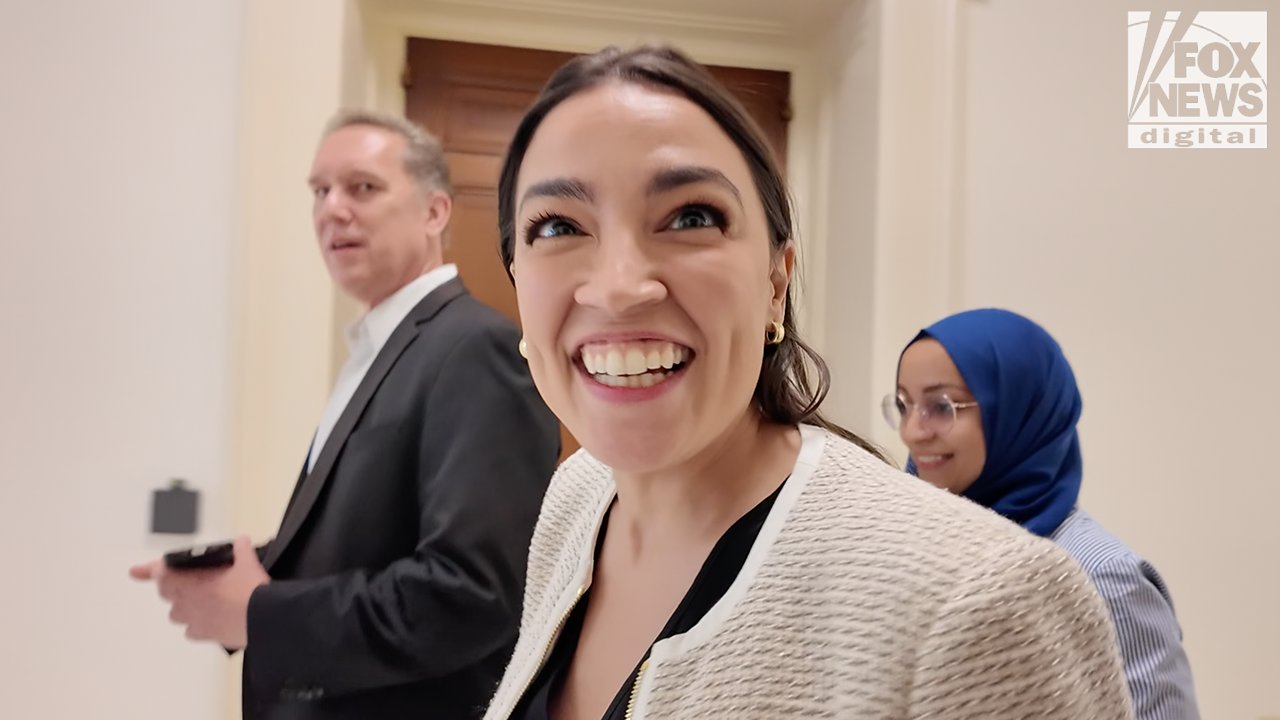
EXCLUSIVE: Rep. Alexandria Ocasio-Cortez, D-N.Y., did not rule out 2028 presidential aspirations when asked by Fox News Digital about the viral video that had pundits guessing if she was soft-launching her campaign.
«I think what people should be most concerned about is the fact that Republicans are trying to cut Medicaid right now, and people’s healthcare is in danger. That’s really what my central focus is,» the New York Democrat said when asked if she was considering a run for president, despite President Donald Trump’s assurances that he wouldn’t cut Medicaid.
«This moment isn’t about campaigns, or elections, or about politics. It’s about making sure people are protected, and we’ve got people that are getting locked up for exercising their First Amendment rights. We’re getting 2-year-olds that are getting deported into cells in Honduras. We’re getting people that are about to get kicked off of Medicaid. That, to me, is most important,» Ocasio-Cortez said on Capitol Hill on Trump’s 100th day in office.
Ocasio-Cortez has crisscrossed the United States with Sen. Bernie Sanders, I-Vt., on the «Fighting Oligarchy» tour, and Americans have been speculating about whether the New York Democrat is launching a shadow campaign for president.
AOC CLAIMS ‘WE ARE ONE’ IN CAMPAIGN-STYLE VIDEO DESPITE YEARS OF INVOKING RACE, GENDER IN POLITICS
Rep. Alexandria Ocasio-Cortez did not rule out a 2028 presidential bid when pressed by Fox News Digital but said her main focus right now is protecting Medicaid. (Fox News Digital)
Ocasio-Cortez’s campaign account posted a video on X last week that invigorated those rumors as the four-term Democrat from New York City and a progressive leader proclaimed, «We are one.»
‘WE ARE ONE’: AOC CAMPAIGN VIDEO SWIRLS 2028 PRESIDENTIAL RUMORS
«I’m a girl from the Bronx,» Ocasio-Cortez said on a campaign-style stage in Idaho. «To be welcomed here in this state, all of us together, seeing our common cause, this is what this country is all about.»
FiveThirtyEight founder and prominent pollster Nate Silver signaled earlier this month that Ocasio-Cortez is the leading Democrat to pick up the party’s presidential nomination in 2028. In a draft 2028 pick with FiveThirtyEight’s Galen Druke, Silver chose Ocasio-Cortez as his top choice to lead the Democratic Party’s presidential ticket.
POLLSTER NATE SILVER CALLS OCASIO-CORTEZ MOST LIKELY TO BE 2028 DEMOCRATIC PRESIDENTIAL NOMINEE
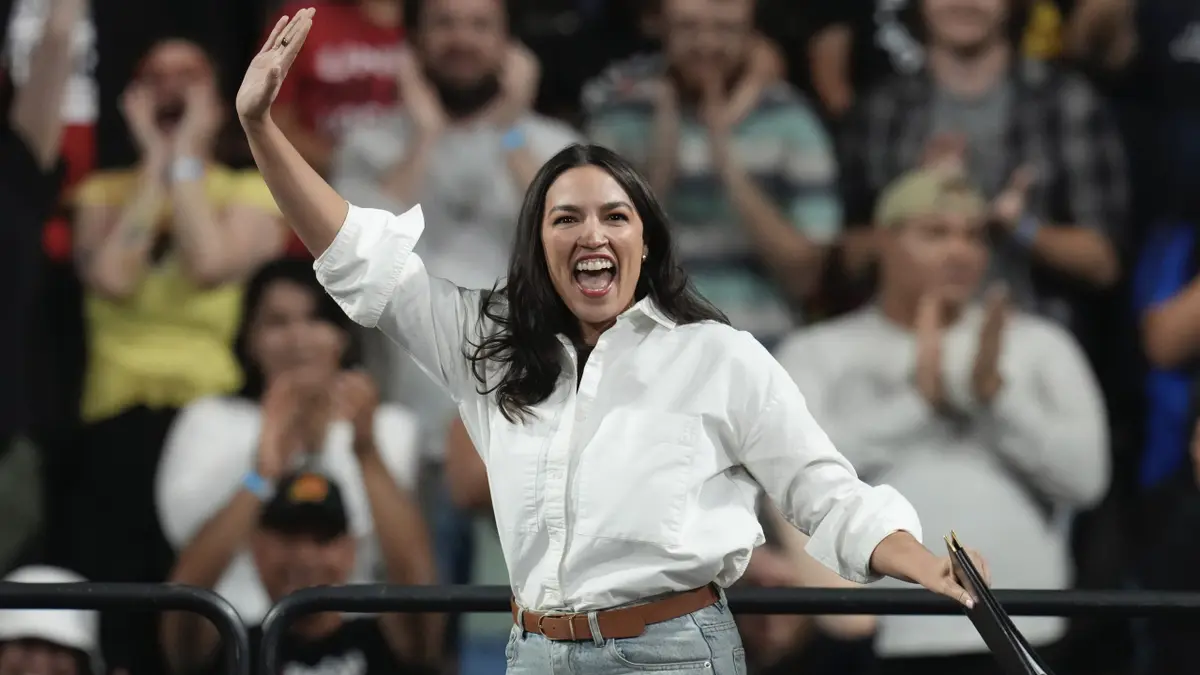
Rep. Alexandria Ocasio-Cortez, D-N.Y., arrives to speak during a «Fighting Oligarchy» tour event at Arizona State University, Thursday, March 20, 2025, in Tempe, Ariz. (Ross D. Franklin/AP Photo)
«I think there’s a lot of points in her favor at this very moment,» Druke said, adding, «Alexandria Ocasio-Cortez has broad appeal across the Democratic Party.»
Americans have been reposting Ocasio-Cortez’s video across X, pointing to the video as proof of her 2028 presidential ambitions. «Get ready America. Alexandria Ocasio-Cortez will almost undoubtedly run for president in 2028,» political reporter Eric Daugherty said in response to the video.
SCHUMER SINKS, AOC SOARS IN NEW POLL AS LIBERAL VOTERS DEMAND HARDER LINE ON TRUMP
As rumors swirl over Ocasio-Cortez’s ambition for higher office, back at home in New York, a Siena College poll found Senate Minority Leader Chuck Schumer’s favorability is down, at 39% among New York state voters questioned in the poll, which was conducted April 14-16. Meanwhile, Ocasio-Cortez’s favorability soared to 47%.
The longtime senator from New York faced pushback from the Democratic Party in March for supporting the Republican budget bill backed by Trump that averted a government shutdown and stirred up outrage among congressional Democrats who planned to boycott the bill.
That growing disapproval among Democrats was reflected in the poll, and the shifting perception comes as DNC vice chair David Hogg, through his political arm, Leaders We Deserve, faced blowback from the DNC this week for investing $20 million into electing younger Democrats to safe House Democrat seats.
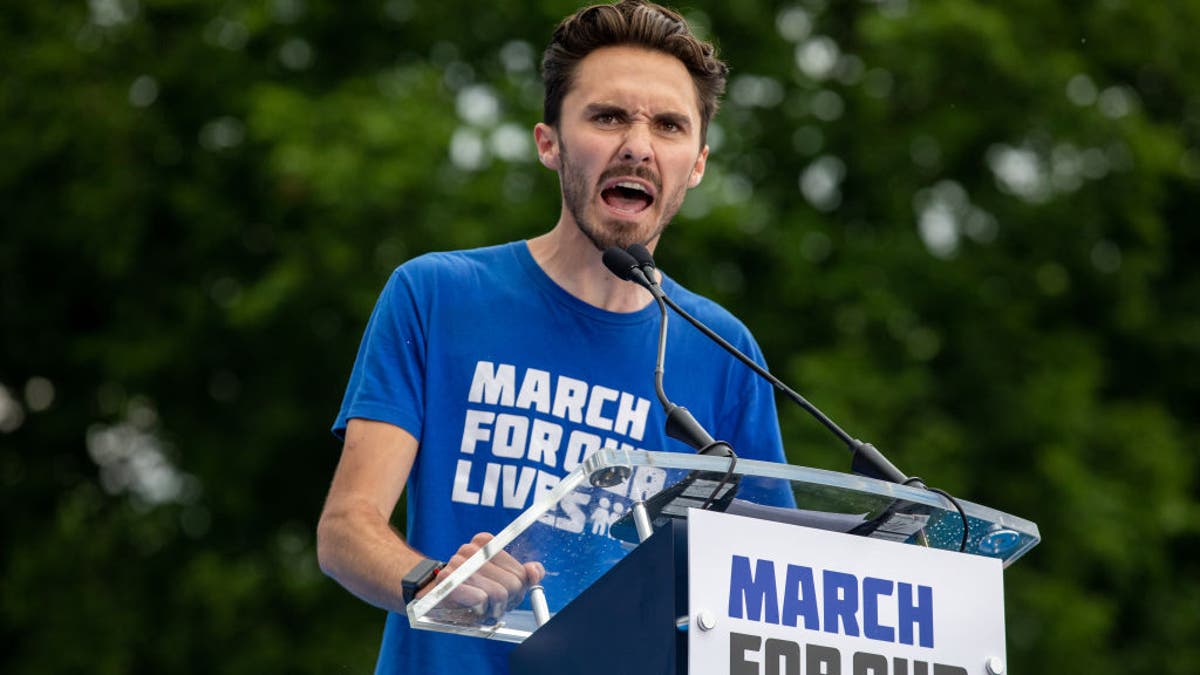
Gun violence survivor and activist David Hogg speaks at the March for our Lives rally against gun violence at the National Mall in Washington on June 11, 2022. (Getty Images)
Ocasio-Cortez raked in a massive $9.6 million over the past three months. The record-breaking fundraising haul was one of the biggest ever for any House lawmaker. Ocasio-Cortez’s team highlighted that the fundraising came from 266,000 individual donors, with an average contribution of just $21.
«I cannot convey enough how grateful I am to the millions of people supporting us with your time, resources, & energy. Your support has allowed us to rally people together at record scale to organize their communities,» Ocasio-Cortez emphasized in a social media post.
THESE ARE THE DEMOCRATS WHO MAY RUN FOR THE WHITE HOUSE IN 2028
Democratic strategist Joe Caiazzo, a veteran of Sanders’ 2016 and 2020 presidential campaigns, said that Ocasio-Cortez appears to be one of a small group of politicians in his party who «are test ballooning a potential 2028 run for the presidency» as Democrats search «for a path out of the wilderness.»
«We’re not really sure who or what it will be, but one of the pathways there is to drill down on economic populism. There are many people that occupy that lane and she is one of them. And there’s clearly energy behind what her and Bernie Sanders did criss-crossing the country.»

Rep. Alexandria Ocasio-Cortez (D-NY) speaks onstage during the first day of the Democratic National Convention at the United Center on Aug. 19, 2024 in Chicago, Illinois. ( Justin Sullivan/Getty Images)
Colin Reed, a Republican strategist, said Ocasio-Cortez «shouldn’t be discounted» by Democrats «who are standing in her way» of running for whichever office she decides to seek — whether as a U.S. senator or president of the United States.
While Ocasio-Cortez and Sanders garnered plenty of national attention as they jetsetted across the country, Reed said their passion and energy might invigorate the progressive portion of the Democratic Party, but «her ideas are way too outside the mainstream to ever be electable at a nationwide level.»
«Ultimately, in a Democratic base there’s always going to be a percentage of voters who are drawn to that message. The issue they run to is it’s just not the majority of Americans. The majority of Americans don’t want to transform our country into some sort of ‘European-style government rules all’ vision. That’s why America was founded in the first place — to get away from oppression, from an overbearing, overreaching government,» Reed said.
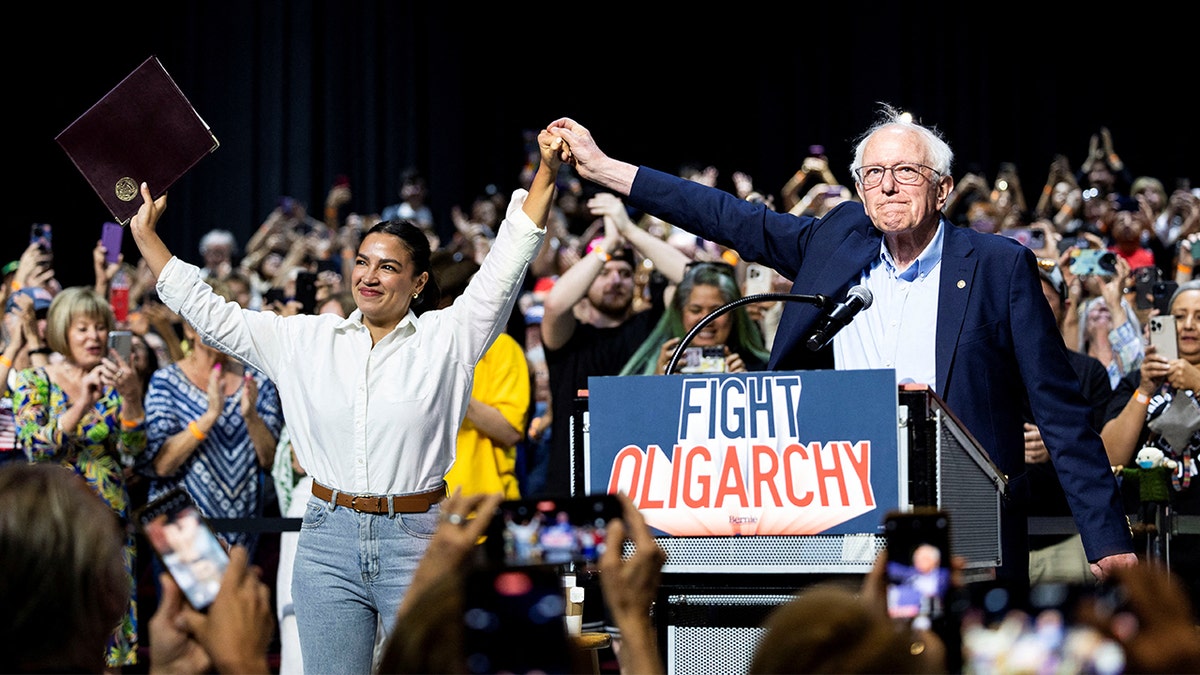
Rep. Alexandria Ocasio-Cortez and U.S. Senator Bernie Sanders participate in a stop on the ‘Fighting Oligarchy’ tour at the Dignity Health Arena, Theater in Bakersfield, California on April 15, 2025. (Aude Guerrucci/Reuters)
As Democrats struggle to land on a consistent message and search for a clear party leader following Republicans’ November wins, there is an opportunity within the party to dominate the national Democratic narrative, Reed explained.
«Chaos loves a vacuum, and right now, there is a vacuum in leadership in the Democratic Party, and thus chaos is ruling the roost,» Reed said.
CLICK HERE TO GET THE FOX NEWS APP
«As long as those two are out there, they’re going to get attention because nobody else is doing anything. The house of cards will come crumbling down, especially when you’ve got two folks out there, Sen. Sanders and Congresswoman Ocasio-Cortez, holding themselves out as climate warriors as they jet around the country on private jets spewing untold carbon emissions into the air. That hypocrisy is one that’s tough for a lot of folks’ stomachs,» Reed added.
Politics,Elections,Alexandria Ocasio-Cortez
INTERNACIONAL
Atentado en Colombia: el presidente Gustavo Petro denunció reducción de custodia de candidato presidencial antes de ser baleado

El presidente de Colombia, Gustavo Petro, denunció que el dispositivo de seguridad del senador y aspirante presidencial Miguel Uribe «fue disminuido extrañamente» antes de ser baleado.
El sábado, el dirigente del opositor Centro Democrático, el principal partido de derecha del país, recibió tres impactos de bala durante un evento de campaña en Bogotá. Está en cuidados intensivos con pronóstico reservado.
Petro aseguró que el número de escoltas fue reducido «el día del atentado». Pasó de «7 a 3 personas» previo al ataque, dijo en la red social X.
En Colombia la seguridad de políticos de alto perfil o personas amenazadas está a cargo de una entidad oficial llamada Unidad Nacional de Protección (UNP).
El abogado de Uribe dijo este lunes que presentó una denuncia penal contra el director de la UNP, pues este año hizo más de 20 solicitudes para reforzar el esquema de seguridad de su cliente, pero supuestamente no fueron escuchadas.
El jurista pidió a la fiscalía abrir una investigación que «establezca si por omisión el Estado dejó en indefensión» a Uribe.
Sin embargo, la fiscal general, Luz Adriana Camargo, dijo a periodistas que Uribe tenía un esquema de seguridad igual al de otros congresistas: siete escoltas y dos automóviles blindados.
Video
Detienen al agresor del candidato colombiano Miguel Uribe Turbay
La fiscal no mencionó que el dispositivo se haya reducido, en una rueda de prensa que ofreció este lunes para brindar avances de la investigación.
Un adolescente de 15 años fue capturado por los guardaespaldas de Uribe como sospechoso de intentar asesinar al aspirante presidencial para las elecciones de 2026.
En videos de cámaras de seguridad se ve que lo persiguen una decena de personas.
Uribe fue impactado por dos proyectiles en la cabeza y otro en la rodilla, según los paramédicos. El político de 39 años pasó por una primera cirugía la madrugada del domingo.
La clínica Fundación Santa Fe de Bogotá informó el lunes que Uribe «ha tenido una escasa respuesta a las intervenciones y los manejos médicos realizados».
«Su situación reviste de la máxima gravedad. Por lo tanto, el pronóstico continúa siendo de carácter reservado», agregó en un comunicado.
La fiscal general aseguró este lunes que el menor capturado podría pasar hasta ocho años privado de libertad si es hallado culpable, aunque no en una cárcel común debido a su edad.
Camargo añadió en una rueda de prensa que el adolescente fue operado debido a una herida de bala que recibió en una pierna antes de ser detenido. Será interrogado cuando se recupere totalmente de la herida, dijo la fiscal.
Una de las hipótesis es que fue contratado por una «red sicarial» que busca a menores de edad para ejecutar «conductas tan graves como» el atentado contra Uribe.
Las autoridades aún buscan a los autores intelectuales del hecho.
Uribe no denunció sufrir amenazas de muerte ante la fiscalía, según Camargo.
El director de la policía, general Carlos Triana, informó que el arma modelo Glock aparentemente utilizada para herir a Uribe fue adquirida legalmente en Arizona, Estados Unidos, en 2020. Se desconoce cómo ingresó a Colombia.
El ministro de Defensa, Pedro Sánchez, aseguró el domingo que se manejan varias hipótesis sobre los motivos del atentado al senador: una es que se trató de un mensaje contra el Centro Democrático, que lidera el influyente expresidente Álvaro Uribe.
El ex mandatario, que gobernó entre 2002 y 2010, denunció de su lado otro presunto ataque. «La inteligencia internacional me informa de la preparación de otro atentado en mi contra», afirmó en la red social X.
Según el ministro Sánchez, otra hipótesis de lo ocurrido el sábado es que sea un intento de «desestabilizar» al gobierno del presidente izquierdista Gustavo Petro, a quien sectores de la derecha acusan de incitar el odio contra la oposición.
El atentado contra Miguel Uribe tensa la carrera por la presidencia de Colombia, que recién empieza.
En medio de fuertes disputas entre la izquierda de Petro y la oposición que busca recuperar el poder, un puñado de políticos anunciaron que aspiran a ser mandatarios. Uribe lo hizo en octubre pasado y ya convocaba mitínes.
El general Triana aseguró que el Estado fortalecerá la seguridad de por lo menos 30 precandidatos.
La primera vuelta de los comicios presidenciales será el 31 de mayo de 2026 y un eventual balotaje está programado para el 21 de junio.
Colombia,Gustavo Petro
INTERNACIONAL
Trump rejects Iran’s counter-proposal in nuclear negotiations: ‘it’s just not acceptable’

NEWYou can now listen to Fox News articles!
President Donald Trump on Monday confirmed he spoke with Israeli Prime Minister Benjamin Netanyahu regarding Iran and the ongoing negotiations.
In speaking to reporters after the call he said he reiterated to Netanyahu Washington’s push to make a deal avoid direct conflict.
«We’re trying to make a deal so that there’s no destruction and death. And we’ve told them that, and I’ve told them that, and I hope that’s the way it works out,» Trump said. «But it might not work out that way.
«We’ll soon find out,» he added.
Trump claimed that Iran had already returned a counter-proposal to the U.S. following its rejection of a proposal given to them last week, though the president said «it’s just not acceptable» and that more negotiations are needed, particularly regarding enrichment-related demands.
The call came after the United Nation’s nuclear watchdog, which is charged with monitoring all nations’ nuclear programs, warned on Monday that it cannot verify whether Tehran’s program is «entirely peaceful» despite the regime’s claims.
US SANCTIONS MONEY LAUNDERING NETWORK AIDING IRAN AS REGIME FACES NUCLEAR REPRIMAND AT IAEA
Rafael Grossi is increasingly concerned about Iran’s nuclear program. (Albert Otti/picture alliance via Getty Images)
Director General of the International Atomic Energy Agency (IAEA), Rafael Grossi, on Monday issued a warning statement that the agency has not only long been barred access to old and new nuclear sites, but that Iran has scrubbed locations in an apparent move to cover up its activities.
In 2020, the IAEA found man-made particles of enriched uranium at three sites, including Varamin, Marivan and Turquzabad. The locations were previously utilized in Iran’s nuclear program and gave the agency credence to believe Tehran had once again turned to deadly nuclear ambitions.
«Since then, we have been seeking explanations and clarifications from Iran for the presence of these uranium particles, including through a number of high-level meetings and consultations in which I have been personally involved,» Grossi said. «Unfortunately, Iran has repeatedly either not answered, or not provided technically credible answers to, the Agency’s questions.
«It has also sought to sanitize the locations, which has impeded Agency verification activities,» he added.
Grossi, who confirmed during an April trip to Washington, D.C. that the IAEA has not been involved in nuclear negotiations between the U.S. and Iran, said on Monday that he has been working «closely and intensively» with both parties in «support of their bilateral negotiation[s].»
The warning comes after the IAEA in a report late last month, also confirmed that Iran had drastically increased its stockpile of near-weapons-grade enriched uranium by nearly 35% in three months.
IRAN’S KHAMENEI REJECTS US ZERO URANIUM ENRICHMENT DEMAND AS ‘100% AGAINST’ ITS INTERESTS
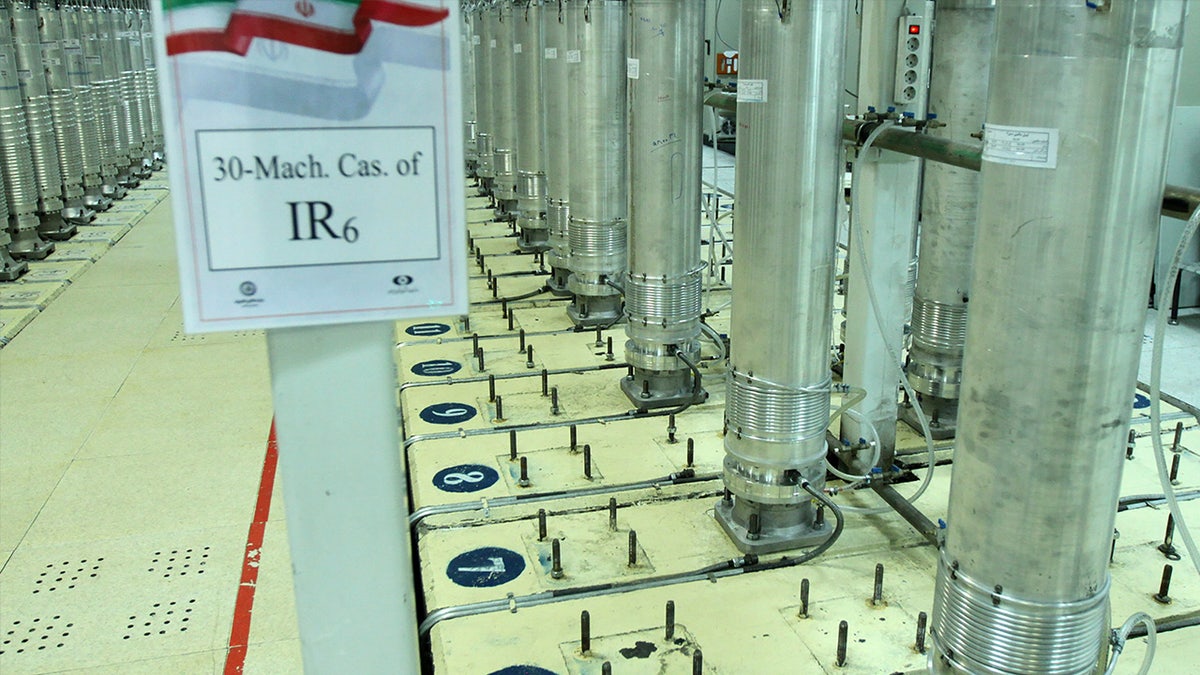
This photo released on Nov. 5, 2019, by the Atomic Energy Organization of Iran shows centrifuge machines in the Natanz uranium enrichment facility in central Iran. (Atomic Energy Organization of Iran via AP, File)
In February, the IAEA assessed that Tehran possessed 274.8 kilograms (605.8 pounds) worth of uranium enriched to 60%, but on May 17th it found Iran now has some 408.6 kilograms (900.8 pounds) – meaning the regime is just a technical step away from being able to make up to 10 nuclear warheads.
Last week, Iranian supreme leader Ayatollah Ali Khamenei came out in strong opposition to a U.S. proposal submitted to Tehran to end its nuclear program, though it remains unclear what details were included in the document, including on enrichment capabilities, and on Sunday, Iranian parliamentary speaker Mohammad Bagher Ghalibaf claimed the proposal didn’t include any sanction relief.
The White House has remained tight-lipped about what was included in the document, though according to some reporting, President Donald Trump gave Iran until June 11 to reach a deal with the U.S., though Fox News Digital could not independently verify these claims.
On Monday, Iranian Foreign Ministry spokesperson Esmaeil Baghaei confirmed that «The U.S. proposal is not acceptable to us. It was not the result of previous rounds of negotiations.»
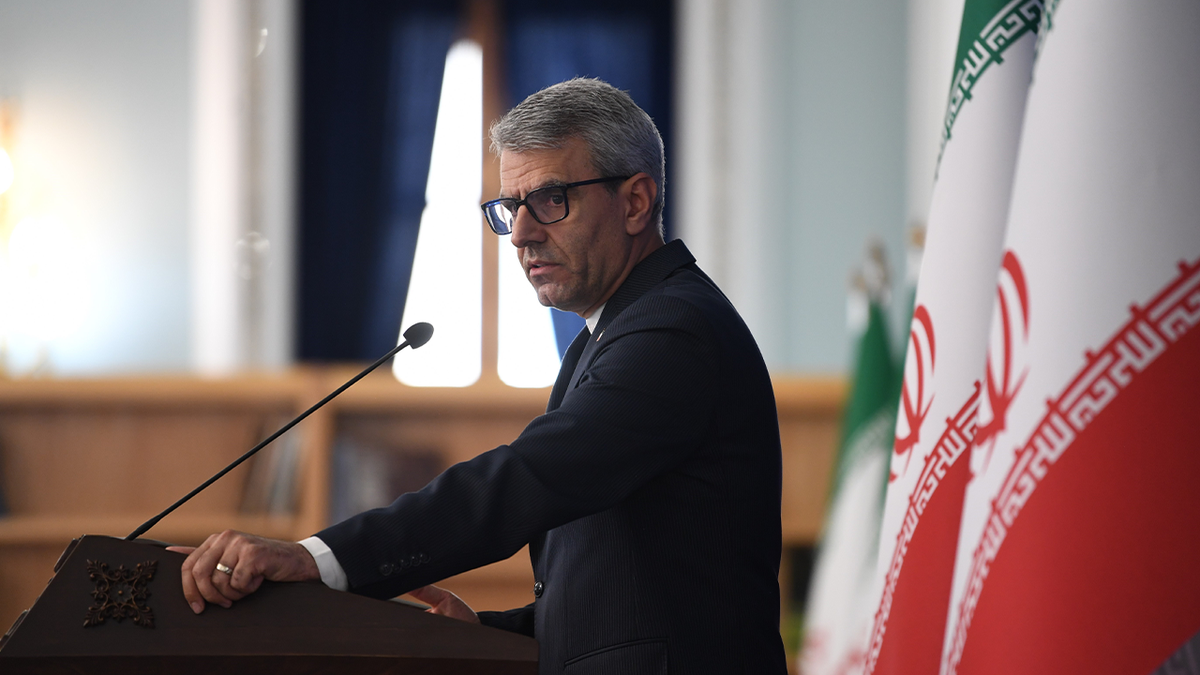
Iranian Foreign Ministry Spokesman Esmaeil Baghaei attends a press conference in Tehran, Iran, on May 26, 2025. An interim nuclear agreement between Iran and the United States is not on Iran’s agenda, Baghaei said. (Shadati/Xinhua via Getty Images)
CLICK HERE TO GET THE FOX NEWS APP
«We will present our own proposal to the other side via Oman after it is finalized. This proposal is reasonable, logical, and balanced,» Baghaei reportedly said.
Some reporting has also suggested Iran might submit their proposal as soon as June 10, though the Iranian UN mission in the U.S. would not comment on or confirm these claims.
INTERNACIONAL
Por qué Trump se juega su política migratoria en Los Ángeles, una ciudad donde el 48% es hispano
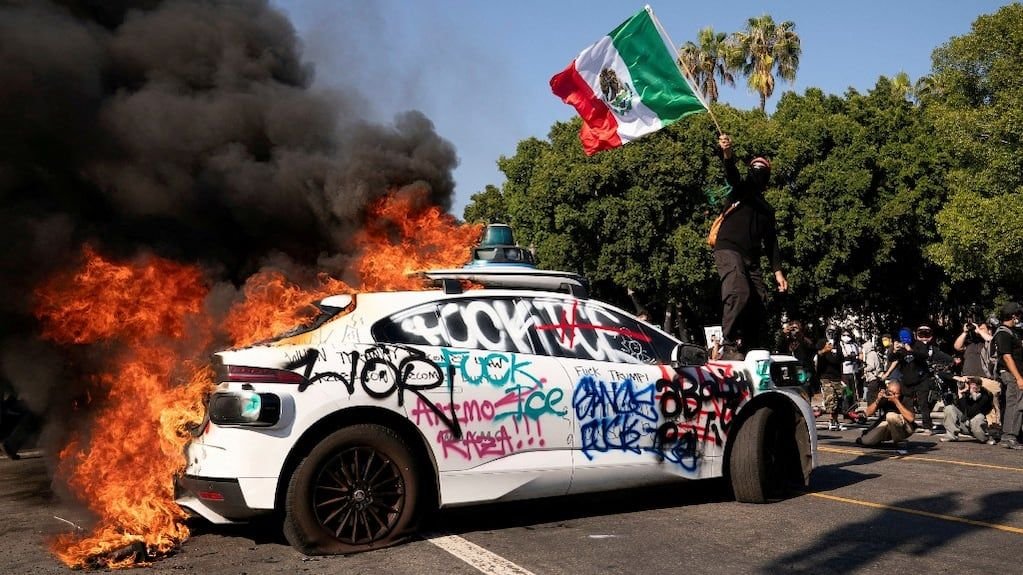
Los Ángeles está marcando hoy a fuego la polémica agenda migratoria de Estados Unidos. Las violentas protestas que estallaron en los últimos días contra las masivas redadas de migrantes prendió una mecha difícil de apagar en una ciudad donde la mitad de sus habitantes son hispanos.
Cada redada, cada arresto y cada deportación impacta de lleno en una comunidad orgullosa de sus raíces latinas. La militarización ordenada por Donald Trump para reprimir las protestas no hizo más que agravar un conflicto entre dos partes dispuestas a ir a fondo.
Leé también: Tensión en Los Angeles: un policía le disparó a una periodista mientras transmitía en vivo
Por un lado, los angelinos tienen un historial de movilización superior a otras ciudades de los Estados Unidos, como ocurrió en 1992 con el llamado “levantamiento de Los Ángeles” tras la absolución de los policías blancos que molieron a palos al taxista afroamericano Rodney King. Hubo saqueos, disturbios e incendios. Entonces también fue necesario desplegar, como ahora, la Guardia Nacional y hasta soldados del ejército, aunque en esa ocasión contó con el permiso de las autoridades locales.
En frente está nada menos que el gobierno de Trump, dispuesto a demostrar que actúa en serio cuando habla de deportar a 11 millones de inmigrantes. “Todo es parte de un plan. Busca sembrar el miedo, mostrar mano dura y asegurar que lo sigan apoyando quienes lo votaron. Está mostrando con evidencia que el país necesita ser limpiado de esta gente”, dijo a TN desde Los Ángeles el analista estadounidense de origen mexicano-salvadoreño Luis Alvarado.
¿Pueden extenderse las protestas hacia otras ciudades de Estados Unidos?
Hoy Trump se juega en Los Ángeles el futuro de su política de mano dura migratoria. Las masivas redadas contra migrantes desataron las protestas. Los agentes del Servicio de Migración y Control de Aduanas (ICE) detuvieron a cientos de latinos.
Las razias son visibles en una ciudad donde el 48% de sus casi cuatro millones de habitantes es hispano. Se llevan a vecinos, familiares, amigos, conocidos o compañeros de trabajo. No pasan desapercibidos.
Manifestantes buscan resguardo en medio de la represión de la Guardia Nacional en Los Ángeles (Foto: REUTERS/Barbara Davidson)
Las protestas estallaron el viernes y no se detuvieron ni siquiera con la llegada el domingo de los primeros 300 efectivos de la Guardia Nacional, sin el consentimiento de las autoridades locales. Es la primera vez que esto ocurre en el país desde 1965.
“Las protestas son lo que Trump necesitaba para mostrar poder. Es calculado. Pero esto se puede ir rápidamente de las manos. Estamos viendo rasgos de las protestas que sacudieron a Los Ángeles con el caso de Rodney King”, dijo Alvarado.
Leé también: Temor entre los hinchas por posibles redadas migratorias durante el Mundial 2026
En ese escenario de disturbios y movilizaciones populares, el mayor temor de las autoridades es que las protestas se extiendan a otras partes del país.
“Diría más que todo en los estados del oeste”, dijo el analista. Esa es la región con mayor presencia latina organizada en todo Estados Unidos.
Según Alvarado, Los Ángeles será el centro neurálgico de cualquier movimiento de protesta latina, aunque señaló que las manifestaciones podrían propagarse hacia ciudades vecinas como San Francisco, San Diego, Sacramento, San José o Fresno, donde la presencia hispana es también muy fuerte.
“Agitadores profesionales”
Trump, desde la Casa Blanca, necesita dominar los disturbios en forma rápida. De no hacerlo, corre el riesgo de que se propaguen las protestas. Necesita mostrarse duro, expeditivo y dominante contra todo aquel que se oponga a sus planes de mano dura contra la migración. Lo presenta como una lucha entre el bien y el mal.
Así, el discurso oficial se repite: “Las personas que causan los problemas son agitadores profesionales e insurrectos. Son malas personas”, declaró. Además, defendió la “excelente decisión” de militarizar la represión.
“Si no lo hubiéramos hecho, Los Ángeles habría sido completamente arrasada”, dijo en su red Truth Social.
La guerra también está entablada contra el gobernador demócrata de California, Gavin Newsom, y la alcaldesa de la ciudad, Karen Bass, a los que consideró “muy incompetentes”. Newsom nunca ocultó su deseo de liderar a su partido contra el gobierno de Trump para posicionarse como presidenciable en las próximas elecciones de 2028.
Pero la situación está comenzando a impactar entre los propios aliados republicanos de la comunidad latina. La senadora estatal de la Florida Ileana García, confundadora del grupo “Latinas for Trump”, dijo estar “profundamente decepcionada” de la actual política migratoria.
Leé también: El ataque contra Miguel Uribe agudiza el temor en Colombia a menos de un año de las elecciones presidenciales
“Esto no es por lo que votamos. Siempre he apoyado a Trump, en las buenas y en las malas. Sin embargo, esto es inaceptable e inhumano”, afirmó la senadora de Miami, hija de refugiados cubanos.
Organizaciones de derechos humanos también encendieron la alarma. “Llamar a la Guardia Nacional sin que lo hubieran pedido las autoridades locales exacerba las violaciones de derechos humanos generalizadas que ya se están cometiendo con la Administración Trump y que incluyen arrestos ilícitos, detenciones multitudinarias y deportaciones masivas, expulsiones a prisiones peligrosas en otros países, la represión de la libertad de expresión, separaciones familiares y la negación del debido proceso”, dijo el director ejecutivo de Amnistía Internacional en Estados Unidos, Paul O´Brien.
No fue el único en advertir sobre esta situación. Las Naciones Unidas, en un pronunciamiento divulgado este lunes, afirmó: “No queremos ver una mayor militarización de la situación y pedimos a todas las partes a nivel local, estatal y federal que trabajen en este sentido”, dijo Farhan Haq, portavoz adjunto del secretario general de la ONU, Antonio Guterres.
Los Ángeles, Donald Trump
-

 POLITICA2 días ago
POLITICA2 días agoCristina Kirchner advirtió que la pueden “meter presa” y lo relacionó con su candidatura a diputada provincial
-

 POLITICA3 días ago
POLITICA3 días agoTras la muerte de Thiago, Patricia Bullrich redobló su defensa del policía y pidió perpetua para los tres ladrones
-

 ECONOMIA3 días ago
ECONOMIA3 días agoUn proyecto de u$s100.000 millones: claves del acuerdo entre Milei y Meloni para exportar gas de Vaca Muerta



























